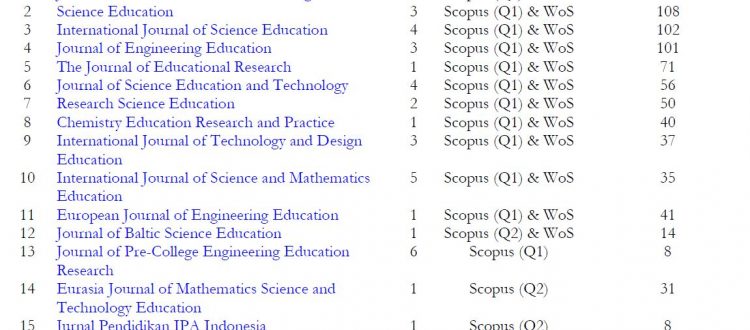The steps of the Engineering Design Process (EDP) in science education: A systematic literature review
Nanang Winarno, Dadi Rusdiana, Achmad Samsudin, Eko Susilowati, Nur Jahan Ahmad, Ratih Mega Ayu AFİFAH
Journal for the Education of Gifted Young Scientists 8 (4), 1345-1360, 2020
Engineering is one of the crucial parts of STEM Education. The Engineering Design Process (EDP) is a new trend within science education reform. Most science teachers lack information regarding the usage of EDP in learning science. This study aims to review 40 articles from reputable international journals such as indexed by Scopus and Web of Science (WoS), which explains the steps of the EDP used in science education. The articles selected for review were the ones published in the last ten years, from 2011 to 2020. Some previous literature review studies focused on the EDP through project-oriented capstone courses, the EDP in middle school settings, and how to implement the EDP in science learning. However, this study focuses on the steps of the EDP used in science education (Science, Physics, Biology, Chemistry, and a combination of science with other disciplines). In addition, this research also explains the strengths and weaknesses of EDP in science education. The research approach used was a systematic literature review. This study analyzed the representation of research according to their general characteristics consists of type of publication, year of publication, country, research approach, educational level, and science content. This study found that research on the EDP that is implemented at the university level is still limited, especially on subjects related to interdisciplinary knowledge. Furthermore, the steps of the EDP used in science education differ from one research to another. The most commonly used steps of the EDP are defining the problem, building, testing, evaluating, and redesigning. There are also several obstacles to the implementation of the EDP in science education. Regardless, the implementation has a positive influence on students, undergraduate students, teachers, or others. The results of this study provide an overview of how to implement the EDP in science education. Thus, it can be used as a reference for stakeholders in the field of science education when implementing EDP in their learning.
The paper can be accessed at the link https://dergipark.org.tr/en/download/article-file/1192641

